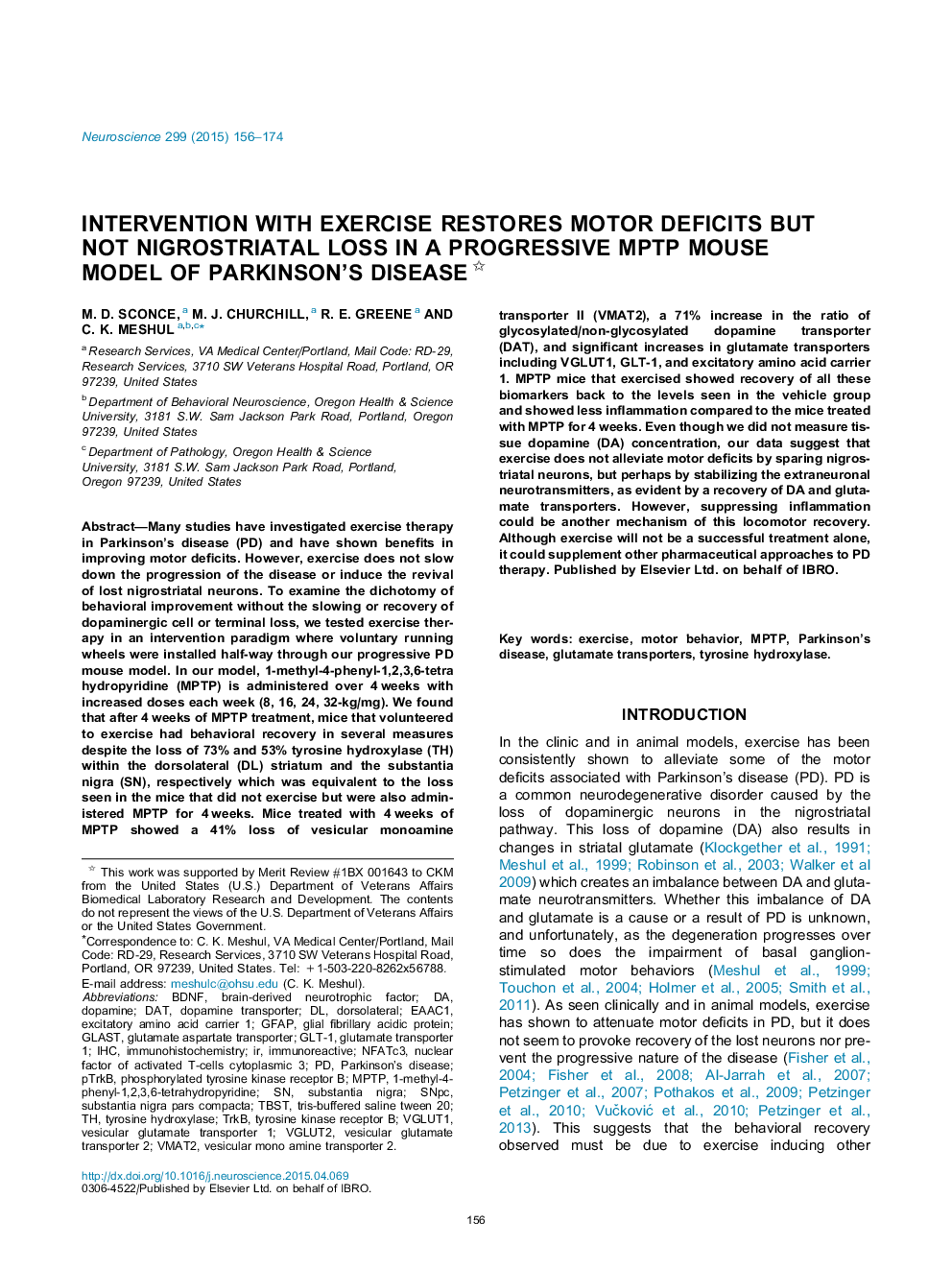| کد مقاله | کد نشریه | سال انتشار | مقاله انگلیسی | نسخه تمام متن |
|---|---|---|---|---|
| 4337470 | 1614777 | 2015 | 19 صفحه PDF | دانلود رایگان |

• Motor and behavioral deficits were restored in mice that volunteered to exercise despite MPTP treatment.
• MPTP mice that exercised had a similar loss of nigrostriatal TH-ir as non-exercising mice administered MPTP.
• VMAT2 and glycosylated-DAT expression returned to vehicle levels in MPTP/exercised mice.
• MPTP mice had increased levels of VGLUT1, EAAC1, and GLT-1, which were restored to vehicle values in MPTP/exercised mice,
• Levels of the inflammatory marker, NFATc3, and the astrocytic marker, GFAP, were decreased in MPTP/exercised mice.
Many studies have investigated exercise therapy in Parkinson’s disease (PD) and have shown benefits in improving motor deficits. However, exercise does not slow down the progression of the disease or induce the revival of lost nigrostriatal neurons. To examine the dichotomy of behavioral improvement without the slowing or recovery of dopaminergic cell or terminal loss, we tested exercise therapy in an intervention paradigm where voluntary running wheels were installed half-way through our progressive PD mouse model. In our model, 1-methyl-4-phenyl-1,2,3,6-tetrahydropyridine (MPTP) is administered over 4 weeks with increased doses each week (8, 16, 24, 32-kg/mg). We found that after 4 weeks of MPTP treatment, mice that volunteered to exercise had behavioral recovery in several measures despite the loss of 73% and 53% tyrosine hydroxylase (TH) within the dorsolateral (DL) striatum and the substantia nigra (SN), respectively which was equivalent to the loss seen in the mice that did not exercise but were also administered MPTP for 4 weeks. Mice treated with 4 weeks of MPTP showed a 41% loss of vesicular monoamine transporter II (VMAT2), a 71% increase in the ratio of glycosylated/non-glycosylated dopamine transporter (DAT), and significant increases in glutamate transporters including VGLUT1, GLT-1, and excitatory amino acid carrier 1. MPTP mice that exercised showed recovery of all these biomarkers back to the levels seen in the vehicle group and showed less inflammation compared to the mice treated with MPTP for 4 weeks. Even though we did not measure tissue dopamine (DA) concentration, our data suggest that exercise does not alleviate motor deficits by sparing nigrostriatal neurons, but perhaps by stabilizing the extraneuronal neurotransmitters, as evident by a recovery of DA and glutamate transporters. However, suppressing inflammation could be another mechanism of this locomotor recovery. Although exercise will not be a successful treatment alone, it could supplement other pharmaceutical approaches to PD therapy.
Journal: Neuroscience - Volume 299, 23 July 2015, Pages 156–174